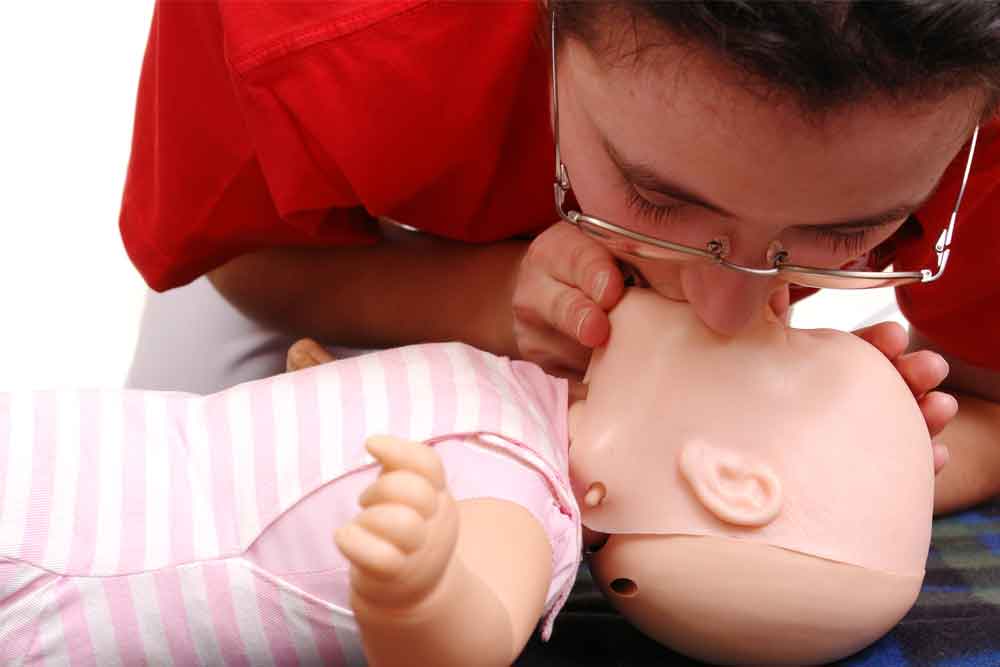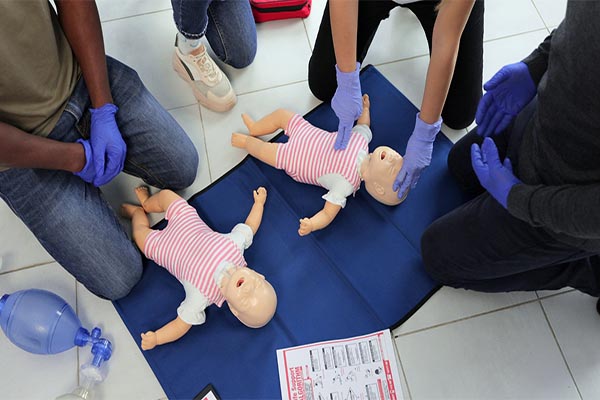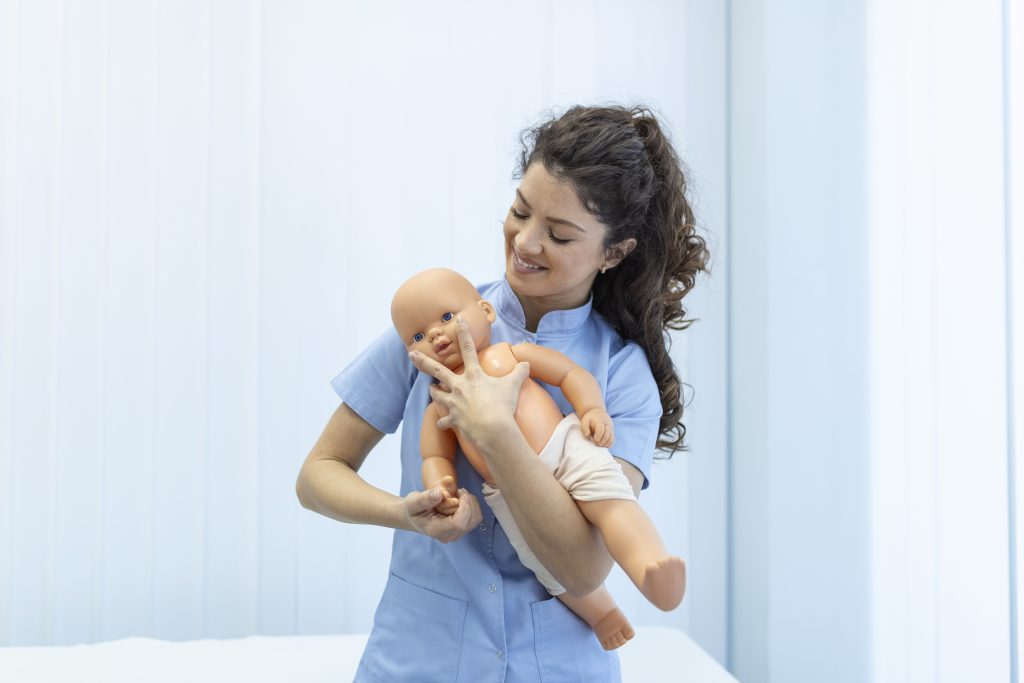
Ensuring the safety of infants is a top priority for parents and caregivers. One crucial aspect of this is knowing how to perform CPR on infants. As guidelines and best practices evolve, it’s important for CPR courses to stay current with these changes to provide the best training possible. This article explores how CPR courses adapt to advances in infant safety guidelines and why staying informed is critical.
Infant CPR is a lifesaving technique that can make a significant difference in emergency situations. Infants have unique physiological characteristics that require specific techniques different from those used on adults or older children. Understanding these nuances can be the difference between life and death.
CPR courses designed for infant safety teach the skills necessary to handle emergencies like choking or sudden cardiac arrest. These courses equip parents, caregivers, and professionals with the confidence and competence to act quickly and effectively.

CPR guidelines are not static; they evolve as new research and technologies emerge. The American Heart Association (AHA), a leading authority on CPR, regularly updates its guidelines based on the latest scientific evidence. These updates reflect the best practices for increasing the chances of survival and recovery in emergency situations.
CPR courses must adapt to these updated guidelines to ensure participants receive the most accurate and effective training. Instructors undergo continuous education to stay informed about the latest CPR techniques and recommendations. This process involves revising course materials, updating instructional methods, and incorporating new technologies or tools that enhance learning.
For example, recent updates may include changes in the recommended compression depth for infants or new techniques for dealing with airway obstructions. By integrating these updates, courses remain relevant and effective.
A fundamental part of CPR training for infants involves understanding their unique physiology. Infants have smaller airways, higher heart rates, and more flexible bones than adults. CPR courses emphasize these differences to ensure that participants can adjust their technique accordingly.
Practical experience is a critical element of CPR training. Participants practice on infant mannequins to gain confidence in performing chest compressions and rescue breaths correctly. This hands-on approach allows for immediate feedback and correction, which is crucial for mastering the skills.
Modern CPR courses often incorporate technology to enhance learning. This can include video demonstrations, interactive simulations, and feedback devices that measure the effectiveness of compressions. These tools provide participants with a more engaging and informative experience.
Technology plays an important role in CPR education by providing simulated practice scenarios. These simulations replicate real-life emergencies, allowing participants to practice their skills in a controlled environment. This type of training helps individuals prepare for the stress and urgency of actual emergency situations.
Some courses use devices that provide real-time feedback on the quality of compressions and breaths. This immediate assessment helps participants adjust their technique on the spot, leading to more effective learning outcomes.

One of the main benefits of taking an updated CPR course is the increased confidence it provides. Knowing that you’re prepared to handle an emergency can offer peace of mind to parents and caregivers. The skills learned in these courses can also be a valuable addition to professional qualifications for those working in childcare or healthcare settings.
Educated individuals can have a positive impact on their communities. By spreading awareness and sharing knowledge, those trained in infant CPR can encourage others to learn these vital skills, thereby creating a safer environment for all children.
When selecting a CPR course, it’s important to consider several factors to ensure you receive the best training possible.
Choose courses accredited by reputable organizations such as the AHA or the Red Cross. These courses are more likely to adhere to the latest guidelines and provide reliable certification upon completion.
Seek courses taught by experienced instructors who are certified and knowledgeable about the latest CPR guidelines. Their expertise can greatly enhance the learning experience.
Consider the course content and format that best suits your needs. Some courses offer online components combined with in-person practice, while others are fully in-person. Evaluate the options and choose one that fits your schedule and learning preferences.
Infant safety is a crucial concern, and knowing how to perform CPR is an essential part of ensuring that safety. CPR courses that keep up with advances in guidelines provide the most effective training, equipping participants with the skills they need to respond confidently in emergencies. By choosing an updated and accredited CPR course, you can contribute to a safer environment for infants and be prepared to make a lifesaving difference.
Are you ready to equip yourself with the lifesaving skills of CPR and First Aid? Don’t wait until an emergency arises—take action now! Contact CPR Classes Near You to find accredited courses that fit your schedule and learning preferences. Whether you’re a parent, caregiver, or professional, our expert instructors will provide you with the knowledge and confidence you need to respond effectively in critical situations.
Get started today and ensure the safety of those you care about!
Our primary goal is to ensure that you receive a top-quality CPR/First Aid certification. With our in-person training in Austin, you can learn CPR and BLS in just one class. Your presence is all that’s needed to continue with your lesson! During your session, you will complete all the live-training components necessary to ensure you receive your AHA Healthcare Provider certification card.
Our CPR Classes in Austin are discounted to $59.95 (saving you $20), and our CPR + First Aid Class is offered at $79.95 (also saving you $20). When looking for CPR Classes, ensure to check for the American Heart Association seal. Other sites might seem cheaper but frequently lack the official training credentials demanded by employers.
Upon successful completion of the course, you will obtain a CPR certification that is valid for two years. The AHA CPR certification is recognized with the highest acceptance rate among employers nationwide.
Indeed! Enroll in any CPR Certification Austin BLS course to extend your certification for an additional two years. The in-person BLS course and the Renewal Class are identical.
Anyone capable of completing the course independently should consider pursuing CPR training and CPR Certification. There is no minimum age restriction for obtaining a CPR certification in Austin through the American Heart Association (AHA)..
CPR training needs to be carried out in person to guarantee its effectiveness. Our experienced instructors offer an engaging and dynamic learning experience. Typically, employers do not recognize CPR certifications that are obtained solely through online courses.
All authorized American Heart Association training centers are obligated to display the entire video. After a three-hour session with CPR Classes Near Me Austin, your BLS CPR eCard will be promptly issued by the instructor on the same day!